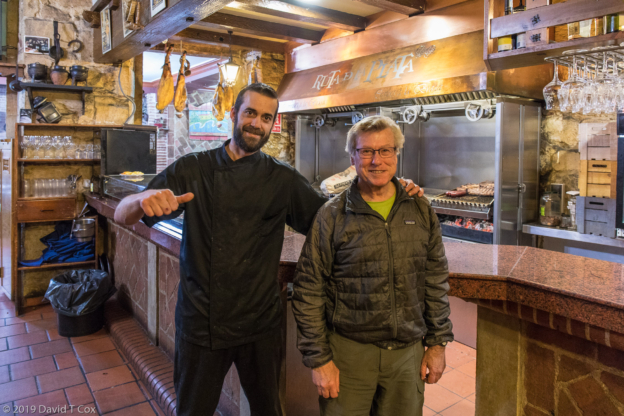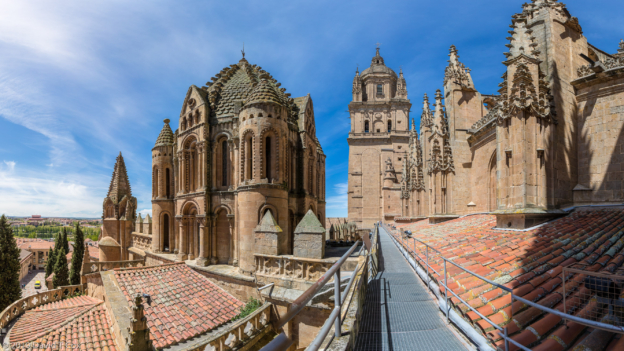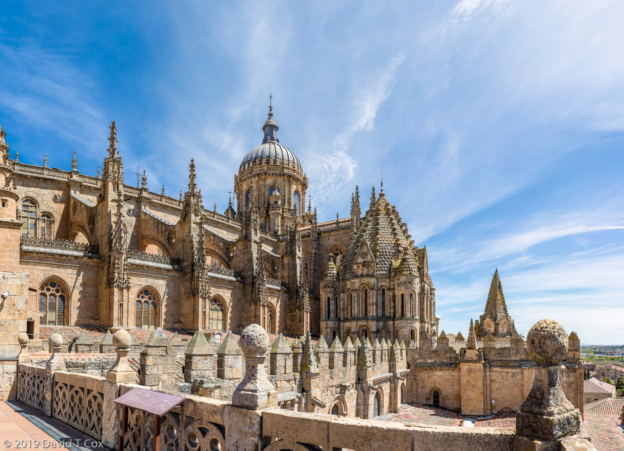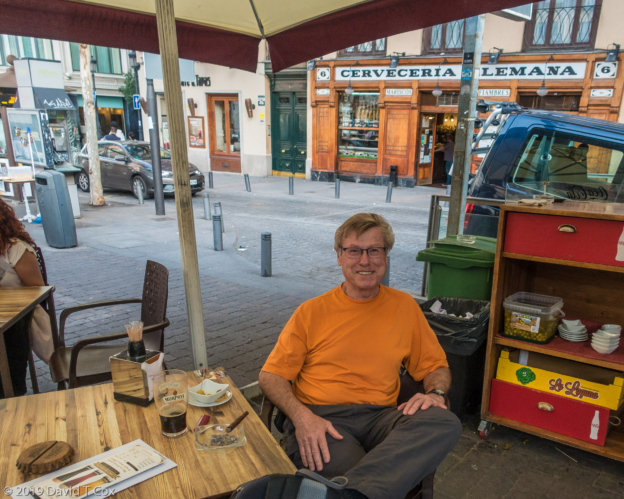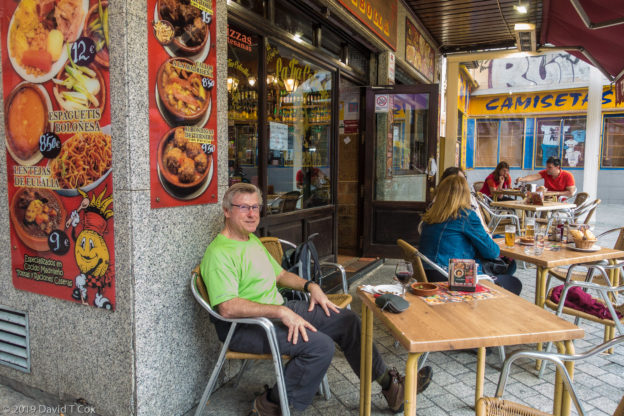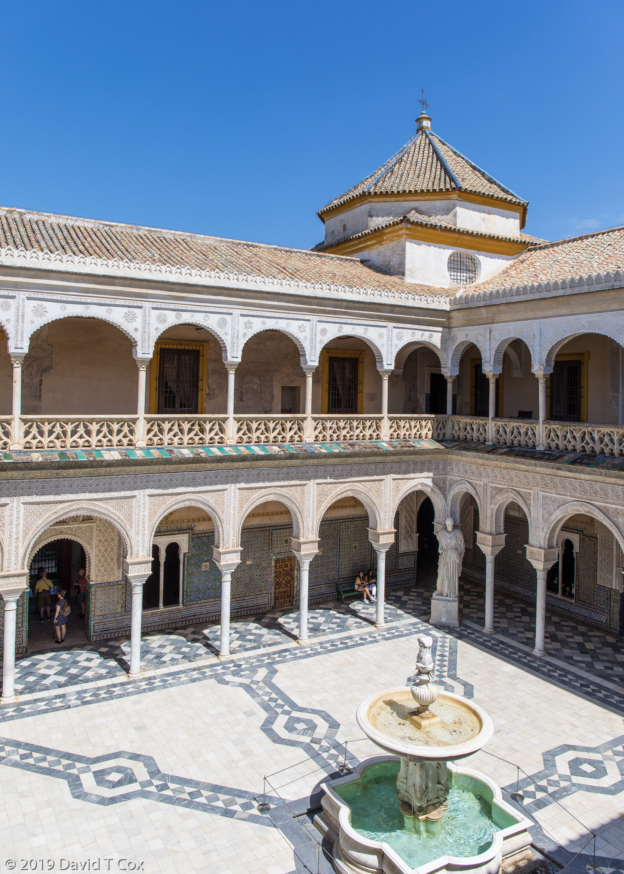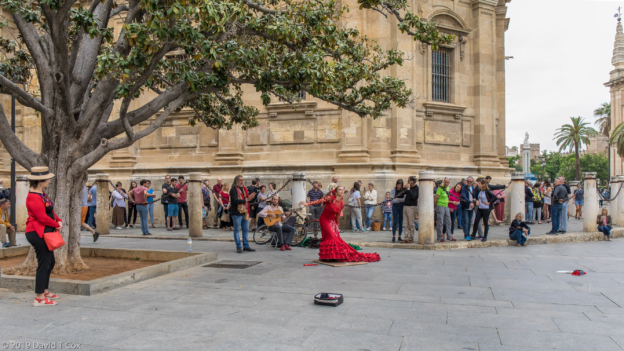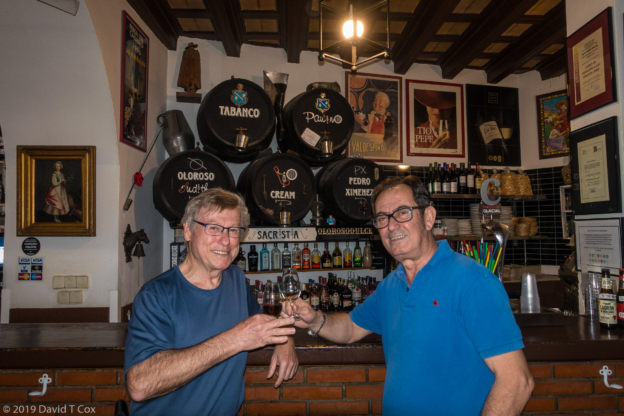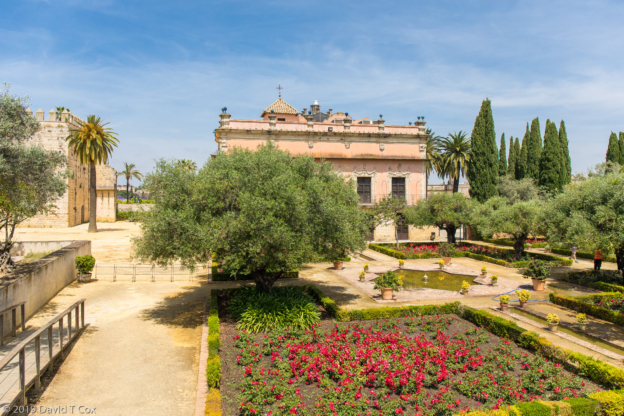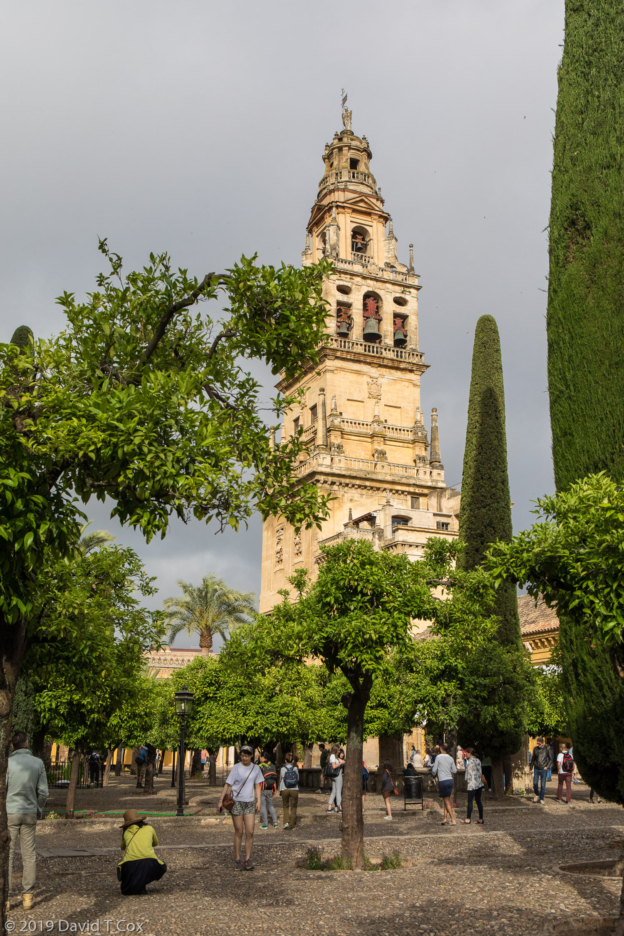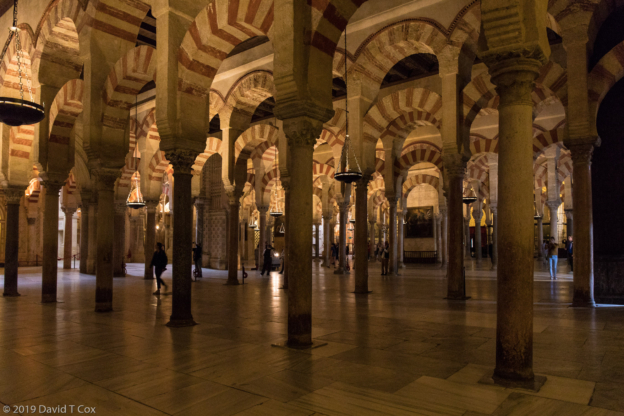All Photos Are Below the Travelogue Text
Click on Any Photo To Open Slide Show
To print the travelogue, right click anywhere on the page. Choose "Print" from your browser dialog box. You can choose Save to PDF in the browser print window.
Share your thoughts.
Email Dave - coxdavid55@hotmail.com
Because my first 4 days in Salamanca were wet and cold, I extended the stay in my favorite town to enjoy the forecasted greatly improved weather – this had me moving to a new apartment down by the river. My last 3 days were sunny and warm, and permitted some good photo opportunities, as well as more comfortable sidewalk tapas bars in the late afternoon. Of special note, I continued to visit some of my old haunts which I first encountered when studying Spanish in Salamanca in 2003. One tavern, with great wood fired grilled meats, then was called Patio Chico. I had trouble locating it years later until I realized its name had changed to Ruta de la Plata. Still the same great place – and I recognized one of the bartenders and the grill master who had been there for well over a decade. I wondered some why the haunted eyes of the grill master now seemed more especially familiar, and then realized he was the spitting image of Jack Dorsey, billionaire founder of Twitter. I include a photo below of him with yours truly for your comparison. Miguel still grills great steak, panceta and sausage – more valuable by far to me than Twitter. He never had heard of Jack Dorsey.
I climbed the Salamanca Bell Tower for the Old and New Cathedrals in order to get some large composite photos from roof height of the Romanesque and Gothic dome towers and decorations. Both photos are composites of around 45 individual photos, giving a particularly wide viewing angle and tons of detail (you won’t find photos like these elsewhere). As over the years I have written much, and published dozens of photos, covering Salamanca’s history and edifices I won’t do a repeat now. The town is feeling more like a second home than a place to visit.
From Salamanca I returned to Madrid, hitting 3 of my favorite tapas haunts in the Santa Ana neighborhood, before traveling on south for a while, stopping first for several days in Seville. There I had a 3 room apartment that opened onto a large patio. I visited for the first time the lovely Casa Pilatos, with Renaissance courtyards and pillars and wonderful Mudejar (post Islam Moorish architectural style) decorations. Also, spent a morning near the huge tourist line to enter the Cathedral, where I watched a street performance of Flamenco. Again, for long discourses on all things Seville and large numbers of photos, you must go back to prior travelogues available on the website.
From Seville I traveled south to finally visit Jerez de la Frontera. Jerez is the birthplace of sherry (“jerez” in Spanish), a fortified wine aged in oak barrels. I used to think of sherry as that disgustingly sweet wine with which 1960’s TV and movie starlets liked to get tipsy. What I have discovered in later years is that almost all good sherry comes from just the Palomino grapes, and always is dry (not sweet), but includes several very different colors and tastes based on the aging and whether the fortification allows a floral (yeast) growth to cover the top. The sweet Sherries come from Moscatel and Ximenez grapes, and mostly seem inferior. The name “sherry” legally can only be applied to the wine from a small triangle area around the town of Jerez. I spent several hours at a small Tabanco (originally the name for a tobacco shop, but now come to be applied to the bars that carry the oak barrels of sherry, where one often can find impromptu flamenco concerts or dances). Paulino, the owner of Tobanco Paulino spent over an hour sitting with me, giving me the history and secrets of making dry sherry (I followed only about 80% of his explanations as his was a rapid Spanish) – you will see the photo of us below. While in Jerez I stayed in a small efficiency apartment well centered in town, and visited the Alcazar (fortress), Cathedral and related church; the churches both were mostly Gothic in architectural style, but had very poor quality stones which already were sluffing off pieces after just 500 years (2000 year old Roman construction and 1000 year old Romanesque churches have much better quality stone).
From Jerez I traveled to Cordoba, one of my favorite towns, for the annual Festival de los Patios, where dozens of wealthy homes open up their patios which are covered with spring flowers in bloom. The Great Mosque (Mezquita), for which construction started in the 8th Century and reached completion by the 10th Century, was then the center of the largest city and the major Caliphate in the Mediterranean. After the Reconquista of this part of Spain, the entire Mosque was converted to a cathedral though only the central portion of the Mosque was renovated. The entirety is an Islamic wonder rivaled, in my opinion, only by the Alhambra in Granada and the Taj Mahal in India. The entire interior, excepting only the space converted into the Cathedral, is a forest of double stone arches supporting the roof over the space of several football fields. The Mihrab, which unusually does not face Mecca, has three arched portals the outside of which is completely covered with mosaics made of semi-precious stones. Inside are protected a number of marble pieces from the original Visigoth Church upon which the 8th Century Mosque originally was constructed. As with Salamanca and Seville, I previously have reported at length on these towns and their vast architectural treasures, and so will not repeat this trip.
I have enjoyed evenings at the Sociedad Plateros (silversmiths society) restaurant with excellent Andalucian dishes. They have barrels of a local “fino” wine – “Montilla” – similar to sherry but in my view much better – it goes great with an order of deep fried lightly battered strips of eggplant with honey, a specialty in Andalucia. I also spent one evening in the expensive Taberna Patio de la Juderia, with terrific food and a nightly Flamenco performance. Every late afternoon I sat on the Plaza Agrupacion de Cofradias, a beautiful triangular plaza on the downhill street to the Mezquita, and had red wine while listening to the street performer, a blind old man with a guitar singing soulful Andalucian songs. Each afternoon the Royal Stables of Cordoba, where by order of the King, they have maintained the pure-bred Spanish horses since the early 1500s, bring one of their beautiful stallions to the plaza for pictures with tourists; this to entice the public to purchase tickets for one of the horse shows during the festival.
I certainly noticed, after publishing the current webpage, that I have included photos of myself in 4 different taverns. This – after spending years publishing hundreds of photos with only a rare one including my face. I guess because I am visiting so many familiar places I have taken far fewer scenic photos, and perhaps have spent somewhat more time relaxing in my favorite afternoon haunts.
Tomorrow I return to Madrid from where I will head north to Basque Country for a number of days in Bilbao, Lekeitio and San Sebastian, after which I will travel on North into France. Later. Dave
- Plaza Mayor view from my private balcony in Luxury Suites No 5, Pano, Salamanca, Spain
- Puente Romano over Rio Torme, Salamanca, Spain
- Dave w Miguel, grill master at Ruta de la Plata, fka Patio Chico, Salamanca, Spain
- Catedrales Pano 1, Salamanca, Spain
- Plateresque detail, W entrance, Catedral Nuevo, Salamanca, Spain
- Catedrales Pano 3, Salamanca, Spain
- Dave at Alemania Cerveceria, Plaza Snt Ana, Huerta District, Madrid, Spain
- Dave at Taberna Tia Cebolla, Huerta District, Madrid, Spain
- Casa de Pilatos, Seville, Spain
- Renaissance courtyard, Casa de Pilatos, Seville, Spain
- flamenco dancer, by line to enter Catedral, Sevilla, Spain
- Dave w Paulino, owner of Tabanco Paulino, discussing sherry, Jerez, Spain
- Alcazar, Almohed 12th C ., Jerez, Spain
- detail, Catedral, Jerez, Spain
- bell tower, Mezquita, Cordoba, Spain
- Mezquita, Cordoba, Spain
To print the travelogue, right click anywhere on the page. Choose "Print" from your browser dialog box. You can choose Save to PDF in the browser print window.
Share your thoughts.
Email Dave - coxdavid55@hotmail.com


